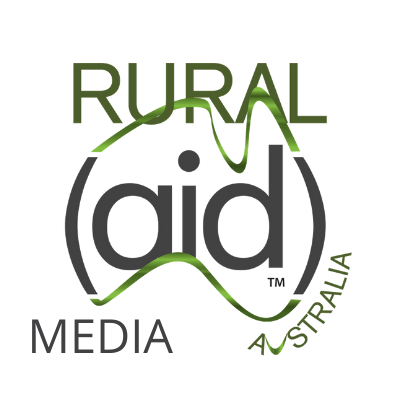RURAL AID DELIVERS OVER $8M IN ASSISTANCE TO FARMERS AND THEIR COMMUNITIES
Almost 16,000 bales of hay delivered to drought and fire affected farmers
Today, Rural Aid released its latest quarterly Snapshot figures outlining the charity’s assistance to farmers and their rural communities for January to March 2020 – www.ruralaid.org.au/snapshots.
Rural Aid CEO, John Warlters said between January and March 2020, Rural Aid delivered 15,974 large bales of hay worth $3.23 million into 190 locations to 1143 drought and fire affected farmers.
“That’s almost 100 farmers per week receiving 1331 large bales of hay transported on the back of 37 trucks,” John said. “We also delivered over $335,000 of domestic drinking water to 640 farmers.”
“Each water truck delivered, on average, 19,000 litres, so that means around 12.16 million litres of 12.16 mega litres of water was delivered to our farmers between January and March. That’s almost five Olympic size swimming pools full of domestic drinking water.”
Over this same period, over $2.34 million in financial assistance was distributed to 1564 farmers and over $1.84 million in gift cards was distributed to farmers, with many spending in their communities, supporting local economies.
However, COVID-19 restrictions have changed the way Rural Aid has had to deliver some of the programs and initiatives.
“Our wonderful and generous Farm Army volunteers and our Farm and Community Rescue Team can no longer travel, so for now, the 10 Towns Makeover and the Farm and Community Rescues are on hold,” John said. “But planning is still going ahead with the 10 Towns and our Community Builders Series webinars, launching on 5 May 2020, will assist rural communities to be ready for when the rest of Australia can visit them again.”
Many of Rural Aid’s counsellors travel to farms to work with their clients. However, for now, this has changed with Rural Aid’s counsellors only offering tele counselling services.
“With many of our farmers experiencing so much uncertainty from natural disasters and now, COVID-19, our counsellors have been extremely busy supporting them,” John said. “In the first quarter of this year, Rural Aid’s counsellors made phone contact with 1528 farmers and in that same period, Rural Aid received 1768 new registrations requesting counselling support.”
The Gift of Music program continued to deliver musical instruments to rural and remote schools, though the Gift of Music team can no longer personally deliver instruments to very excited children and their teachers.
Between January and March, we delivered 216 musical instruments, valued at over $131,600, to 18 rural and remote schools, giving over 4000 students access to learning a musical instrument. Many of these children would not have had these opportunities.
“We could not do this without the generosity of everyday Aussies and our corporate sponsors,” John said. “It’s their continuing support that enables Rural Aid to assist farmers and their communities through our various programs and initiatives.”
“Since July 2019, Rural Aid has distributed over $23 million in assistance to farmers and their communities. Now, more so than ever, we are leveraging our proven delivery model to ensure assistance reaches drought, fire and now COVID-19 affected farmers.”
If you are a primary producer or farmer and require assistance, please register at: www.ruralaid.org.au. Primary producers and farmers must be registered with Rural Aid to receive assistance.
To help us to continue to deliver this much needed aid to our farmers, their families and their communities, please support Rural Aid by donating at www.buyabale.com.au/donate.
Media enquiries: 0447 116 757 | media@admin.media.ruralaid.org.au
Media spokesperson: Rural Aid CEO John Warlters – 0409 618 641
About Rural Aid
Rural Aid is one of Australia’s largest rural charities. Well known for the highly successful ‘Buy a Bale’ campaign, the charity also provides financial assistance, water and counselling to farmers in times of drought, flood or fire. Other initiatives support its vision that farming and rural communities are safeguarded to ensure their sustainability both during and after these natural disasters. Visit www.ruralaid.org.au for further information on these programs and other support for our rural communities.
Visit www.ruralaid.org.au/snapshots for Rural Aid’s latest assistance statistics.
Visit www.ruralaid.org.au/towns/webinars/ for Rural Aid’s Community Builders Series webinars information.
Follow Rural Aid for updates on:
- Rural Aid – FB: @ruralaidaustralia | IG: @ruralaid |IN: Rural Aid Ltd | TW: @ruralaidaust
- Buy A Bale – FB: @buyabaleofhay | IG: @buyabale | TW: @buyabale
